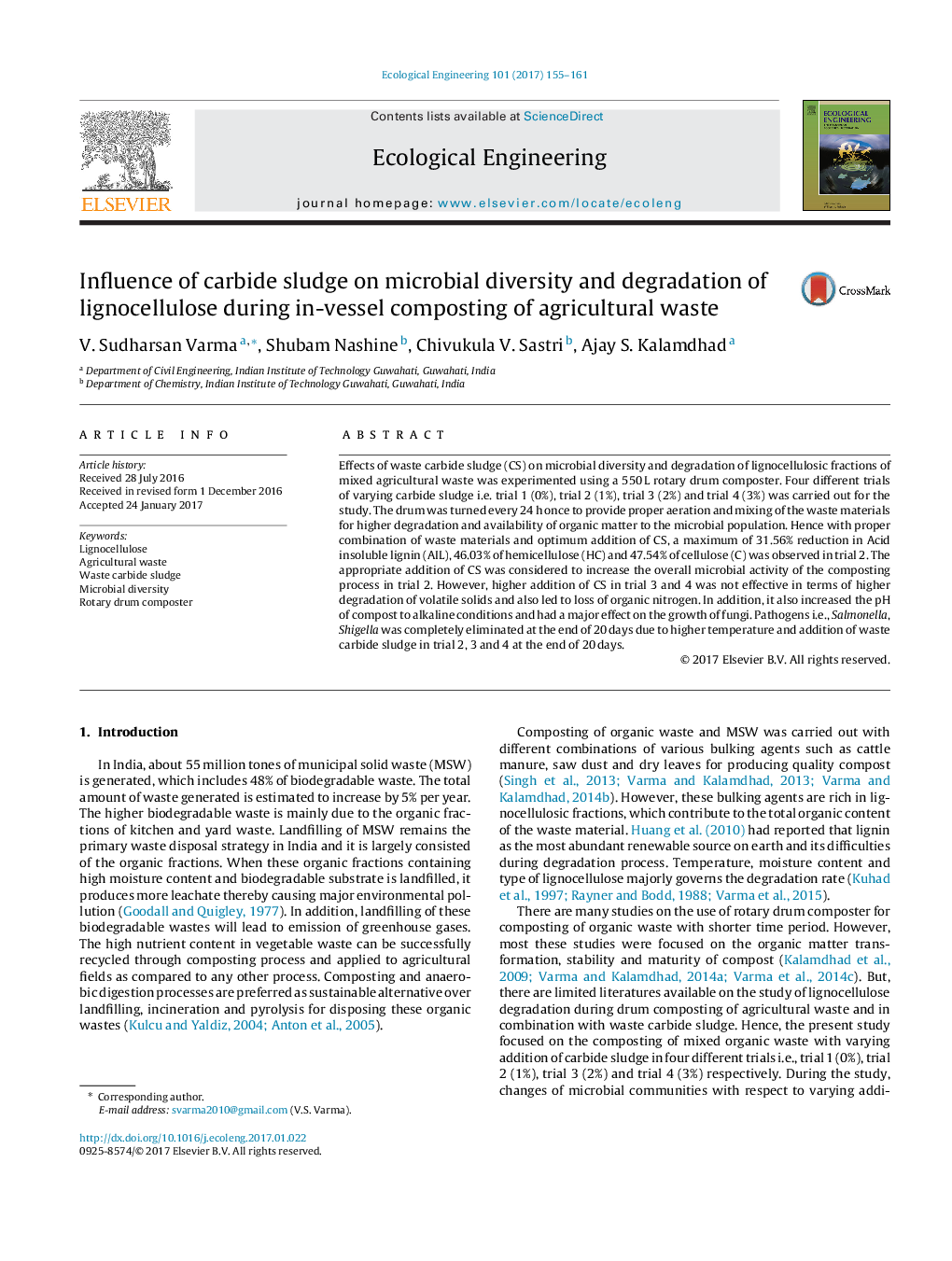| Article ID | Journal | Published Year | Pages | File Type |
|---|---|---|---|---|
| 5743924 | Ecological Engineering | 2017 | 7 Pages |
Abstract
Effects of waste carbide sludge (CS) on microbial diversity and degradation of lignocellulosic fractions of mixed agricultural waste was experimented using a 550Â L rotary drum composter. Four different trials of varying carbide sludge i.e. trial 1 (0%), trial 2 (1%), trial 3 (2%) and trial 4 (3%) was carried out for the study. The drum was turned every 24Â h once to provide proper aeration and mixing of the waste materials for higher degradation and availability of organic matter to the microbial population. Hence with proper combination of waste materials and optimum addition of CS, a maximum of 31.56% reduction in Acid insoluble lignin (AIL), 46.03% of hemicellulose (HC) and 47.54% of cellulose (C) was observed in trial 2. The appropriate addition of CS was considered to increase the overall microbial activity of the composting process in trial 2. However, higher addition of CS in trial 3 and 4 was not effective in terms of higher degradation of volatile solids and also led to loss of organic nitrogen. In addition, it also increased the pH of compost to alkaline conditions and had a major effect on the growth of fungi. Pathogens i.e., Salmonella, Shigella was completely eliminated at the end of 20Â days due to higher temperature and addition of waste carbide sludge in trial 2, 3 and 4 at the end of 20Â days.
Related Topics
Life Sciences
Agricultural and Biological Sciences
Ecology, Evolution, Behavior and Systematics
Authors
V. Sudharsan Varma, Shubam Nashine, Chivukula V. Sastri, Ajay S. Kalamdhad,
